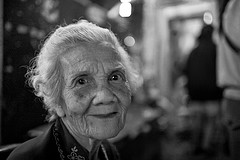 If you have an elderly loved one at a nursing home or assisted-living facility in Temecula, or if your family is just beginning to think about skilled nursing options, it is important to learn more about proposed legislation designed to protect LGBT long-term residents of such facilities. Nursing home abuse and neglect are serious problems in California and across the country, and such incidents can sometimes involve discrimination against the patient.
If you have an elderly loved one at a nursing home or assisted-living facility in Temecula, or if your family is just beginning to think about skilled nursing options, it is important to learn more about proposed legislation designed to protect LGBT long-term residents of such facilities. Nursing home abuse and neglect are serious problems in California and across the country, and such incidents can sometimes involve discrimination against the patient.
The proposed law, SB 219, has been named the “Lesbian, Gay, Bisexual, and Transgender Long-Term Care Facility Resident’s Bill of Rights.” The bill is aimed at extending certain protection against discrimination based on sexual orientation and gender identity to seniors in nursing homes and other facilities in California.
Learning More About SB 219 and LGBT Protections in California Nursing Homes
 Southern California Nursing Home Abuse Lawyer Blog
Southern California Nursing Home Abuse Lawyer Blog
















